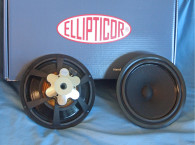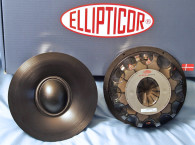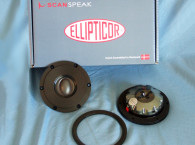

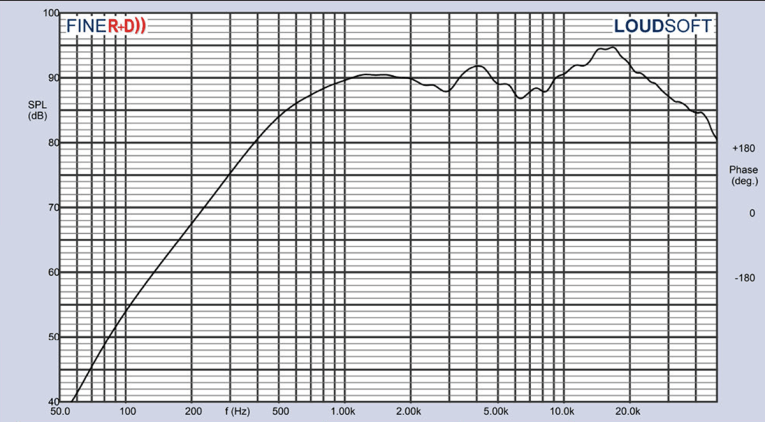
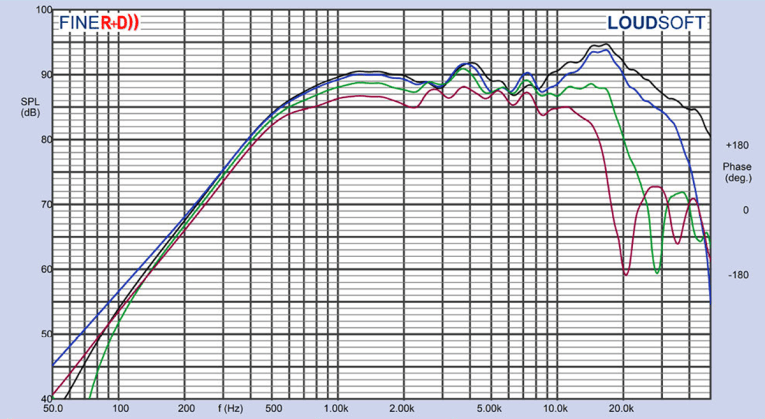


With this concept, cone modes are suppressed by angled slices in the cone that are glued back together. This product became extremely popular in the high-end two-channel market when it was introduced, and still is.
Evidently, the idea of using elliptical-shaped voice coils to control cone and dome modes came from an engineering brain storming session that was focused on the goal of coming up with a new motor concept at Scan-Speak. As part of the conversation, it was kind of a joke to suggest incorporating an elliptical voice coil, but some engineering humor that had some solid science behind it. By not driving the diaphragm symmetrically, but asymmetrically, what you get is an “infinite” number of Eigen frequencies, but with less contribution for each frequency and overall lower distortion. Driving the diaphragm symmetrically you get a finite number of Eigen frequencies with a higher contribution combining at certain frequencies producing the “dreaded” coloration modes.
From this exciting concept developed at Scan-Speak more than three years ago, the company now has five Ellipticor models, the 18WE midwoofer (Test Bench, April 2018), the 21WE midwoofer (Test Bench, October 2020), the D3404/55200 tweeter (Test Bench, April 2018), the recently released 38cm 38WE woofer, and the subject of this month’s first driver explication, the new D2404/552000 Ellipticor tweeter.
Overall, the D2404/552000 is the little brother to the D3404 tweeter, and it is considered a 24mm tweeter (Photo 1). This device has with a diaphragm Sd of 4.6cm2, which is about the same dome area as a conventional round 0.75” dome (Sd=4.5cm2) tweeter. The voice coil diameter is 20mm × 28mm, so you may think of it as an elongated 19mm diameter tweeter.
For a motor system, Scan-Speak basically scaled down its D3404 AirCirc tweeter motor with eight neodymium slugs (vs. 10 slugs for the D3404 Air-Circ motors) and includes a copper shorting ring (part of the patented Symmetrical Drive SD-2 motor format) and a titanium former. The motor system is underhung like most tweeters, and has a gap height of 3mm and a voice coil length of 1.8mm for a 0.6mm Xmax. This motor and diaphragm yield a 2.83V/1m sensitivity of 91dB, good for this size tweeter.
Other features include a coated cloth elliptical dome, aluminum face plate, gold-plated terminals, and a very slick aluminum trim ring that covers the mounting screws. This “beauty” ring snaps into place and is held tight through the use of three neodymium magnets mounted on the underneath side around it peripheral.

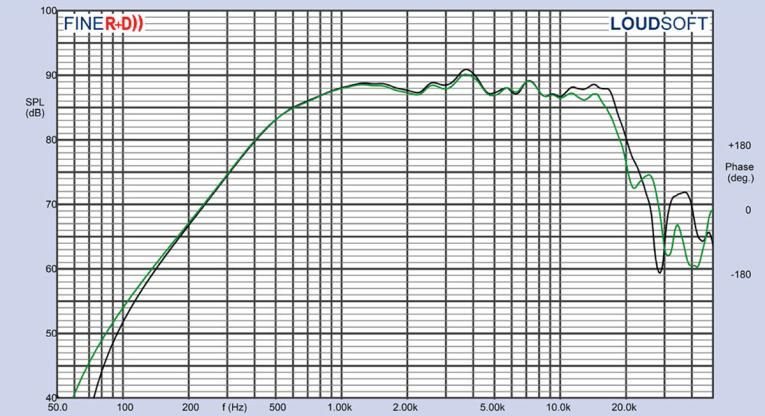

Testing commenced using the LinearX LMS analyzer to produce the 300-point impedance sweep illustrated in Figure 1. The D2404/552000’s impedance resonance occurs at a low 514Hz (factory spec is 550 Hz). With a 3.47Ω DCR (factory spec is 3.5Ω), with the minimum impedance for this tweeter measuring 3.49Ω at 1.95kHz.
Following the impedance testing, I recess mounted the D2404/552000 in an enclosure that had a baffle area of 11” × 6.5” and measured the on- and off-axis frequency response from 300Hz to 40kHz using the LoudSoft FINE R+D analyzer and the GRAS 46BE microphone (courtesy of LoudSoft and GRAS Sound & Vibration) at 2V/0.5m normalized to 2.83V/1m, using the cosine windowed Fast Fourier Transform (FFT) method. All of these SPL measurements also included a 1/6 octave smoothing, which approximate the 100-point frequency response resolution I used with LMS for a number of years. Figure 2 shows the on-axis response to be ± 2.5dB from 700Hz to 14kHz, peaking to 95dB at about 18kHz.
Figure 3 depicts the on- and off-axis (0° to 45°) response of the D2404/552000. Figure 4 shows the off-axis curves normalized to the on-axis response. Figure 5 shows the CLIO 180° polar plot (measured in 10° increments). These measurements were all made with the D2404/552000 dome in the normal vertically oriented position. Since the height of the dome is greater than the width, I decided to investigate to see if there was any vertical directivity.
Figure 6 gives the on- and off-axis with the tweeter in a horizontal orientation. Since it’s a bit hard to compare with Figure 3, I compared the two orientations at both 30° off-axis, depicted in Figure 7. Most of the variation comes above 10kHz, so I really think vertical directivity due to the diaphragm shape is trivial, and not really much of a concern. The last SPL measurement was the two-sample SPL comparison illustrated in Figure 8, indicating the two samples were closely matched to within 1dB or less throughout the operation range of the driver.



The next test sequence in the Test Bench protocol was to use the Listen, Inc. AudioConnect analyzer along with the Listen SCM 1/4” microphone and SoundCheck 18 software (provided courtesy of Listen, Inc.) to measure the impulse response with the Ellipticor tweeter recess-mounted on the test baffle. Importing this data into the Listen SoundMap software produced the cumulative spectral decay plot (usually referred to as a “waterfall” plot) given in Figure 9. Figure 10 shows the Short Time Fourier Transform (STFT) displayed as a surface plot.
For the last test procedure, I set the 1m SPL to 94dB (4.41V) using a pink noise stimulus, and measured the second (red curve) and third (blue curve) harmonic distortion at 10cm (Figure 11). Note the third-harmonic distortion is very low, less than 0.45%. All things taken together, this is another impressive addition to the Scan‑Speak Ellipticor line. For more information, visit www.scan-speak.dk. VC
This article was originally published in Voice Coil, March 2021.




